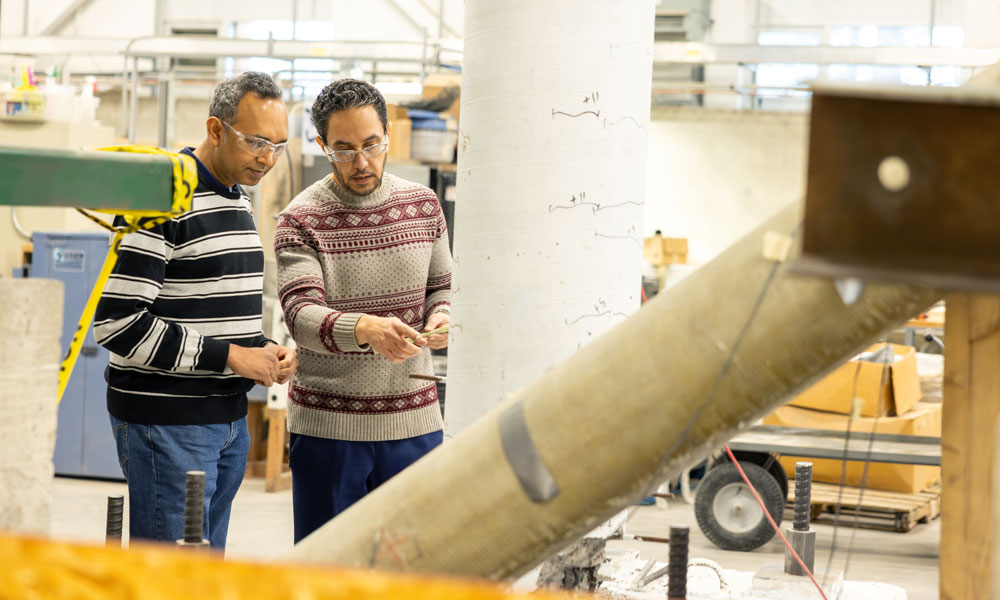Infra
Building better infrastructure for climate resilience – UBC Okanagan News

“We’ve designed our structures to bear loads based on historic data, but with climate change, everything is different. We’re dealing with unknown hazards and unknown natural load combinations, so as researchers, we must find a statistical balance of how the future might play out.”
In Dr. Alam’s Applied Laboratory for Advanced Materials and Structures (ALAMS), his team of undergraduate and graduate students is doing just that: exploring advanced materials through extensive applied experimental work.
By subjecting ultra-high-performance concrete and high-strength/superelastic reinforcements to various tests simulating potential real-world conditions, Dr. Alam aims to build modern resilient structures with lifespans upwards of 200 years.
Meraj Rubayat Kamal and Rubaiya Rumman, engineering doctoral students at ALAMS, check the final calculations for a measurement of mortar mixes.
Sustainably retrofitting for climate resilience
Catastrophic events like what happened on the Coquihalla Highway only stand to increase as climate change conflicts with vulnerable road structures and higher traffic volumes.
The result is incredible pressure on Canada’s aging roads and bridges—further exacerbated in BC by the ever-present threat of earthquakes along the west coast’s Cascadia Subduction Zone.
“Retrofitting existing infrastructure will help protect it against future disasters, but we have to explore more sustainable ways of doing that by considering life cycle costs,” Dr. Alam explains. “At the same time, we have the opportunity to use different—and more advanced materials—to make our structures more resilient.”
Some unique alternative materials being explored in Dr. Alam’s lab include the combination of wood fly ash—a byproduct of burning sawdust—and cement to produce green concrete. Wood fly ash has been found to have great potential as a substitute for coal fly ash, a green cement supplement that is becoming obsolete as coal power plants shut down around the globe.
“Everyone in my lab has a similar motive; we don’t want to just study about sustainable construction and then publish our findings in a journal. We want to create the most change possible in the real world.”
His research team is also exploring the use of advanced materials like super elastic Nitinol bars, fibre-reinforced plastic bars and high-strength-steel reinforcing bars; the incorporation of green concrete developed from industrial waste and substances like demolished concrete from old buildings and bridges; and recycled rubber from old tires.
Many of Dr. Alam’s projects are collaborations with other professors in the School of Engineering, enabling him to broaden the scope and influence of his research.
“UBC Okanagan attracts top talent from around the world, and when they join my research group, they enrich our work with diverse insights and expertise. I believe this is key to opening doors to the kinds of innovative projects and perspectives we’re working on.”
He adds: “Everyone in my lab has a similar motive; we don’t want to just study about sustainable construction and then publish our findings in a journal. We want to create the most change possible in the real world.”


)






